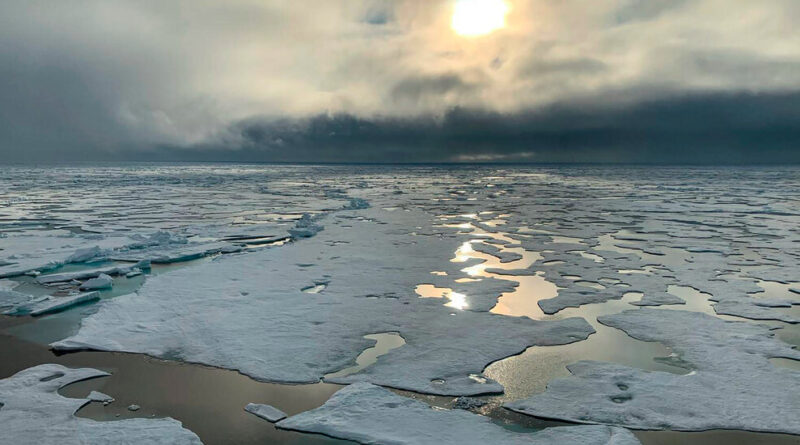Arctic Summer Could Be Practically Sea-Ice-Free by the 2030s
[ad_1]
The first summer on record that melts practically all of the Arctic’s floating sea ice could occur as early as the 2030s, according to a new scientific study — about a decade sooner than researchers previously predicted.
The peer-reviewed findings, published Tuesday, also show that this milestone of climate change could materialize even if nations manage to curb greenhouse gas emissions more decisively than they are currently doing. Earlier projections had found that stronger action to slow global warming might be enough to preserve the summer ice. The latest research suggests that, where Arctic sea ice is concerned, only steep, sharp emissions cuts might be able to reverse the effects of the warming already underway.
“We are very quickly about to lose the Arctic summer sea-ice cover, basically independent of what we are doing,” said Dirk Notz, a climate scientist at the University of Hamburg in Germany and one of the new study’s five authors. “We’ve been waiting too long now to do something about climate change to still protect the remaining ice.”
As sea ice has dwindled in recent decades, communities, ecosystems and economies across the roof of the world have been grappling with the consequences. But the effects extend far beyond the region.
Sea ice reflects solar radiation back into space, so the less ice there is, the faster the Arctic warms. This causes the Greenland ice sheet to melt more quickly, adding to sea-level rise globally.
The temperature difference between the North Pole and the Equator also influences storm tracks and wind speed in the mid-latitudes, which means Arctic warming could be affecting weather events like extreme rainfall and heat waves in temperate parts of North America, Europe and Asia.
Over the past four decades, the far north has already been warming four times as quickly as the global average, a phenomenon that scientists call Arctic amplification.
“Our result suggests that the Arctic amplification will be coming faster and stronger,” said Seung-Ki Min, a climate scientist at Pohang University of Science and Technology in South Korea and another author of the new paper. “That means the related impacts will be also coming faster.”
Over the course of every year, the surface water of the Arctic Ocean freezes and melts with the seasons. The amount of ice grows in winter, peaks around March, then declines toward an annual minimum, typically in September.
The September lows have been edging downward ever since continuous satellite measurements began in 1979, leading researchers to try to predict when the ocean might experience its first summer that melts effectively all of the floating ice.
This doesn’t mean there would be zero ice on the water — icy patches are expected to remain in certain corners of the Arctic for some time to come. Instead, the threshold scientists use is 1 million square kilometers of ice, or about 386,000 square miles. This is less than 15 percent of the Arctic’s seasonal minimum ice cover in the late 1970s.
Looking at both satellite measurements of ice cover and computer models of the global climate, researchers have projected that the September ice will likely dip below this level for the first time before 2050. But the exact timing has been hard to predict, partly because the computer models generally underestimate the sea-ice declines that satellites have been detecting.
The authors of the latest study, which was published in the journal Nature Communications, accounted for this issue by first adjusting the climate models to align more closely with the satellite observations. They then used the adjusted models to project future sea-ice changes under four possible scenarios for greenhouse gas emissions in the coming decades.
Under three of these scenarios, representing moderate to high increases in emissions, the September ice falls below the critical threshold for the first time as early as the 2030s, about a decade earlier than previously estimated.
But the study also found roughly similar timing under the fourth scenario, in which humanity stops pumping additional heat-trapping gases into the atmosphere around 2070, something nations’ policies are not on course to achieve. Earlier research had suggested that September might stay abundantly icy in this scenario.
The Arctic Ocean’s first unfrozen September, if and when it arrives, will be an important scientific benchmark, but it won’t be some kind of turning point, said Mark C. Serreze, the director of the National Snow and Ice Data Center at the University of Colorado Boulder. The Arctic started transforming into a bluer ocean decades ago, setting off vast changes to polar bear populations, shipping routes, access to natural resources and geopolitics.
“It’s already happening,” said Dr. Serreze, who was not involved in the new research. “And as the Arctic continues to lose its ice, those impacts will grow and grow and grow.”
[ad_2]
Source link



